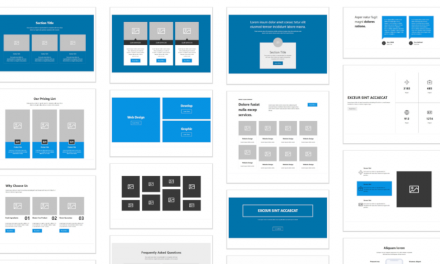Automattic released over 100 block patterns to its users on WordPress.com last week. Patterns are a set of blocks that users can insert into their posts or pages for predefined yet customizable sections of content. Most of WordPress.com’s new patterns are general enough in design to cover a range of uses. However, the choices also cover some niches like restaurants.
“The WordPress Editor is a powerful tool that can help bring your design ideas to life but one of the best parts is, you don’t have to start from scratch,” wrote Ian Stewart, the WordPress.com Design Team Lead, in the announcement. “Building sophisticated designs can be as easy as picking Patterns from our growing library, and snapping them together to create beautiful-looking posts and pages.”
Aside from the work that Gutenberg Hub has done with its template library, this is one of the largest dumps of block patterns from anyone in the WordPress community at once. The big question right now is whether the larger WordPress community will see them in some form.
“No immediate plans to bring those out to the larger community outside of WordPress.com just yet,” said Stewart in a quick chat. “I expect us to contribute in some fashion to the potential block pattern directory but no immediate plans there yet either.”
Admittedly, I was a little disappointed in the response. I bought into the idea of block patterns from day one and have been patiently awaiting an explosion of layouts from the development community. As a former theme business owner, I see the dozens of problems that patterns would have solved for me five, six, or seven years ago. And, this is a feature that could win over some holdouts who are waiting for the block editor to mature enough to build more advanced layouts.

“The team’s current focus is on making great-looking WordPress.com patterns and contributing back to the Gutenberg Project when we see potential for improvement with the tools for creating them,” said Stewart. “I think, like you, we’re pretty excited about the potential for Patterns and improved design controls in the Block Editor. So we’re plugging away at that right now. There’s a lot of exciting designs that can be made today and even more that we’ll be able to make in the future.”
Not now is not a no, however. Automattic has a gluttony of talented designers. If a block pattern directory emerges from recent discussions (it’s still an early idea), I have little doubt that individuals from the company would submit patterns. Users of the WordPress software will also see new patterns in themes that the design team releases publicly, such as those within Seedlet.

The great thing about patterns is that they are easy to recreate. Even if the WordPress.com design team decides to keep them in-house for the foreseeable future, they can offer inspiration to theme authors who are looking to dive into this feature. Most of the patterns use only the core WordPress blocks. However, some of the contact-related patterns use the Form block, which is available via the Jetpack plugin.
Other patterns make use of the Layout Grid block, which is in the official plugin directory. This is one area that the block editor still lags a bit behind in, so it is necessary to use a plugin to make some of the more complex pattern designs work. However, there is an open discussion on a grid system for core. Tavern readers seemed to be receptive to the idea earlier this year too.

The design team put together an extensive array of call-to-action patterns. With over 20 to choose from in this category alone, just about any site owner who wants to sell a product, service, or content should be able to find something that suits them.

For now, those using WordPress.com can fully enjoy one of the better parts of the block editor. As for theme authors who are building for the open-source WordPress platform, remember that great artists steal.











